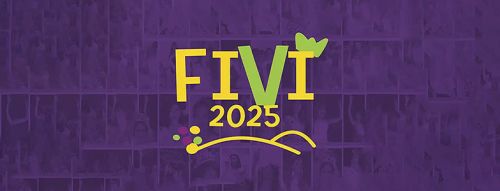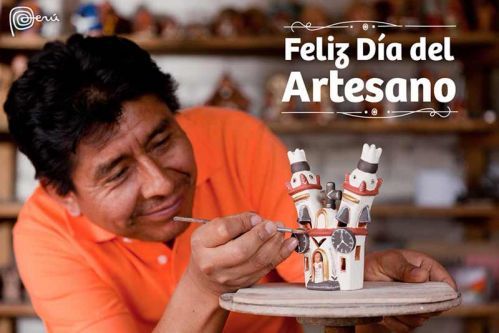Thanks for help!
When travelling to a foreign country it’s always a good idea to know which items you can bring with no problems, and which ones you better leave at home because restrictions or bans apply in the country of your destination.
For Peru find a quite detailed list of items that you can bring without difficulties or with some restrictions and those that you can’t bring into the country at all below.
Content overview
- Personal items that can be brought into Peru
- Medication, supplements, and medical devices that can be brought into Peru
- Electric and electronic devices incl. accessories that can be brought into Peru
- Other items that can be brought into Peru
- Food that can be brought into Peru
- Cigarettes and alcohol that can be brought into Peru
- Bringing Money into Peru
- Bringing Pets into Peru
- Restricted and prohibited items when entering Peru
- Peruvian Customs Declaration Form / Bienvenido al Perú Customs App
Please note that below regulations only apply when the items enter the country as accompanied luggage with a traveler (foreigner (tourist), foreign resident or Peruvian) - when shipping items into Peru other regulations are in place, which are shortly described at the end of this list.
Be aware as well that all items you bring into the country tax- and duty-free have to be for personal use or consumption and shouldn’t exceed normal household quantities!
Personal items that can be brought into Peru tax- and duty-free
- Clothes for personal use
- Suitcases, bags and backpacks containing personal belongings
- Toiletry for personal use
- Other personal items and jewelry for personal use
- Books, magazines, newspapers and documents for personal use
Medication, supplements and medical devices that can be brought into Peru tax- and duty-free
- Medication for personal use only (except medication containing narcotics, which may be restricted or prohibited in Peru)
- Vitamins and dietary supplements for personal use only
- Aids and appliances for personal mobilization and medical control (wheelchair, walkers, crutches, blood pressure / glucose meter, nebulizers, thermometer, etc.)
- Even though medical marijuana was legalized in Peru in 2017, your medical marijuana prescription from another country won’t be accepted in Peru. So, a big no to bringing cannabis leaves, stems and flowers into Peru. A grey area is still cannabis derivatives such as CDB Oil or even Hemp powder, even though both are readily available in Peru and most probably no-one will care when entering the country with small amounts for personal use.
Electric and electronic devices incl. accessories that can be brought into Peru tax- and duty-free
- 2 cellphones (1 cellphone for minors age 7 to 18)
- 1 laptop
- 1 tablet or 1 digital organizer
- 2 conventional or digital cameras
- 1 video camera or camcorder (portable and not for professional use)
- 1 radio or audio player/recorder (portable and not for professional use)
- 1 CD / DVD player (portable)
- 1 video game device (portable) incl. 10 games
- 2 external hard disc drives and 4 USB sticks
- 4 memory cards for the digital camera, video camera / camcorder or video game device brought into the country at the same time
- 4 USB sticks
- 10 rolls of film for the camera and 10 cassettes for the video camera / camcorder brought into the country at the same time
- 20 CDs or 10 DVDs
- 1 portable calculator
- 2 electric hair dryers or hair straighteners
- 1 electric shaver
- Drones (have to be declared; please read below under "Restricted items")
Other items that can be brought into Peru tax- and duty-free
- 1 (set of) sporting equipment for personal use
- 1 musical instrument (portable)
- Other articles for personal use or consumption or gifts with a total value of up to US$500. In case of electric and electronic devices not mentioned above, tools or other personal equipment, only one item each is allowed to bring into Peru tax- and duty-free when the total value won’t exceed US$500.
- If the value of these items exceeds US$500 or exceed above mentioned allowed quantities, they should be declared. So, the custom declaration form should be filled in and be presented at “aduanas” (customs).
- If the value is between US$500 and US$ 1,000, a duty of 12% is required to be paid; if the value is above US$ 1,000, the normal import duty for each article applies (foreign residents and Peruvians should know the maximum value of declared items per year is US$3000). As Peruvian customs officers seem to be quite creative when determining the value of an item, best bring receipts with you, which can be presented in case appraised value is in the clouds.
- If you don’t declare what has to be declared and are caught, be prepared to pay next to the usual duty additionally a fine of 50% of the customs value of the item.
Food that can be brought into Peru
The following food items can be brought into Peru without an import permit from Senasa, the Peruvian National Agrarian Health Service, as long as they are in normal household quantities, correctly labeled, unopened and commercially packed or hermetically sealed and aren’t brought from countries with sanitary restrictions.
- Cooked sausages and other cooked meat products
- Cooked or cured ham
- Matured and processed cheese
- Canned food
- Pasteurized milk products
- Processed honey
- Fresh animal products such as raw meat or fresh cheese as well as most fresh vegetables and fruits are restricted items which must fulfill certain requirements; an export sanitary certificate from the country of origin and a special import permit from Senasa is needed to bring them into the country.
Cigarettes and alcohol that can be brought into Peru tax- and duty-free
- 20 packs of cigarettes (max. 400 cigarettes) or 50 cigars or 250 grams tobacco (for travelers older than 18 years)
- For shisha (sheesa) tabacco the normal tabacco regulations apply as long as the tabacco doesn’t contain cannabis or opium
- E-cigarettes and e-liquids aren’t considered in the Peruvian legislation, but bringing one or two mods and a bit of liquid (both can be bought in Peru) isn’t a problem
- 3l of liquor (for travelers older than 18 years) - except any beverage named “Pisco” not produced in Peru, which is prohibited
Bringing Money into Peru
- Amounts of more than US$ 10,000 or the equivalent in any other currency have to be declared when entering or leaving Peru.
- Entering or leaving the country with amounts over US$ 30,000 or the equivalent in any other currency is prohibited.
- So, if you carry more than US$ 10,000, download the app "Bienvenido al Perú" available on Android and iOS and follow the instructions. Best have some proof of the origin of the money.
- If you opt to not declare amounts over US$ 10,000 and are caught, expect to pay a 30% fine on the amount you carry with you, If you are caught with amounts over US$ 30,000 expect that amounts over the US$ 30,000 are confiscated and you are fined 30% on the rest.
Bringing Pets into Peru, including requirements
Senasa, the Peruvian National Agrarian Health Service, considers only dogs and cats as pets. Per person only one pet can be brought into Peru as accompanied luggage (in cabin or as checked baggage), as air cargo or on land, tax-free.
Peru doesn’t quarantine dogs and cats that meet the following requirements:
- Certificate of Good Health issued by an official veterinarian in the home country within 14 days before entering Peru
- Proof of vaccinations against:
- Rabies for both dogs and cats - vaccinated between 21 days and 12 months prior to entering the country. Peru does not recognize 2- or 3-year rabies vaccines.
- Additionally, for dogs: vaccination against Parvovirus, Distemper, Hepatitis, and Leptospirosis
- Additionally, for cats: vaccination against Panleukopenia (FVRCP), Feline Viral Rhinotracheitis and Calicivirus
- Recent proof of veterinary treatment against internal and external parasites
Above requirements also apply to emotional support and service dogs and cats.
Peru doesn’t require a special import permit for dogs and cats (exception: puppies and kittens less than 12 weeks of age and unvaccinated) nor a pet microchip or rabies titer test to enter the country and doesn’t have a banned breeds list.
Upon arrival at the airport or Peruvian border, pet owners have to proceed with their pet to the Senasa office. Here the pet owner first has to pay two different fees: an examination fee equivalent to 1.973% of 1 UIT = S/ 101.61 (2024) and a fee for issuing the pet’s permit to enter the country equivalent to 0.729% of 1 UIT = S/ 37.54 (2024). So something around S/ 140.
Then the health certificate, vaccination certificates and parasite treatment certificate are checked and the dog or cat quickly looked over. If the documents and the pet’s health are to the satisfaction of the Senasa inspector, the pet can enter. If the documents aren’t in order or the pet doesn’t seem to be in good health, further examination by a licensed Peruvian veterinarian can be requested at the dog owners’ expense. In the end, the Senasa inspector decides if the animal can enter or needs, for example, a parasite treatment or a vaccination or is quarantined before being allowed to enter or has to be returned to the country of origin.
Other animals that might be considered pets in other countries such as birds, rodents and rabbits, fish, reptiles, etc. need an export sanitary certificate from the country of origin and a special import permit from Senasa. Additional permits are required to bring animals that are under the Convention on International Trade in Endangered Species of Wild Fauna and Flora (CITES) into Peru.
Above mentioned recommendations are given to our best knowledge reflecting the current Peruvian regulations. As these sometimes change quickly and without prior notice, we highly recommend checking the veterinary regulations shortly before your travel with the nearest Peruvian consulate and / or Senasa.
Restricted and prohibited items when entering Peru
The official list of restricted and prohibited items is long, but most items on it are surely nothing a normal traveler would carry around. So here just a few items that you might consider bringing into the country that are on the list.
Restricted Items
Restricted items need permission to be brought into the country. Depending on the item, it just has to be declared (and paid duty on it) or special requirements have to be fulfilled and a special permit has to be issued.
Restricted items include, but aren’t limited to:
- Everything exceeding the amount or value of above items - declare upon arrival and pay duty
- Everything not intended for personal use - declare upon arrival and pay duty
- Pets except for 1 dog or 1 cat (see above under Pets), other animals and animals that are under the Convention on International Trade in Endangered Species of Wild Fauna and Flora (CITES) - get in contact with the nearest Peruvian consulate and / or Senasa
- Veterinary products and pet food / animal feed - get in contact with the nearest Peruvian consulate and / or Senasa
- Plants and plant products - get in contact with the nearest Peruvian consulate and / or Senasa
- Cultural items such as art objects and archaeological artefacts - get in contact with the nearest Peruvian consulate and / or the Ministry of Culture
- Weapons and ammunition - get in contact with the nearest Peruvian consulate and / or Sucamec / Discamec
- Drones
- Over the past years, regulations to bring drones into Peru were eased. So today drones under 2 kg of weight for personal recreation and air sports don’t need a special license from MTC, the Ministry of Transport and Communication, anymore.
- Drones have to be declared upon entry (download the App "Bienvenido al Perú" which is available on iOS and Android, follow the instructions and fill in required fields; once arriving in Peru proceed to customs at your point of entry; see below under "Peruvian Customs Declaration Form / Bienvenido al Perú Customs App") and 18% of the value must be deposited, which is refunded when leaving Peru.
- Failing to declare your drone might cause a hefty fine when caught.
- With this payment, travelers get a temporary operations license and can use the drone during their stay in the country.
- If the drone is commercially used, a special permit issued by MTC’s Directorate for Civil Aviation (DGCA) is needed.
- Be aware that flying drones over or near archaeological sites (except you apply for another special permit at the Ministry of Culture or on site), military bases and airports (maintain at least 4 km distance) is prohibited.
- Without yet another special permit, the drone is prohibited from throwing or dropping any objects.
- Keep your distance as well from roads, train tracks, persons and buildings.
Prohibited Items
Then there are items you just aren’t allowed to bring into the country. If you are caught with them, they will be seized and you may be fined or worse.
These include, but aren't limited to:
- Drugs, narcotics and medication containing narcotics
- Fireworks
- Used clothes and shoes due to amount and value not considered for personal use
- Any beverage named “Pisco” not produced in Peru
- Any weapon or ammunition
- Used car spare parts
- Some pesticides and other chemicals
Peruvian Customs Declaration Form / Bienvenido al Perú Customs App
Since June 2022, the good old customs declaration form has served its time and was replaced by the App "Bienvenido al Perú" which is available on iOS and Android. It details in short the most important regulations in English and Spanish and gives you the option to declare items or money.
While below you still find the old custom declaration form and currency declaration form in the attachments, as they show in short quite clearly which items have or haven’t to be declared, helpful as well the Bienvenido al Peru website with excellent, detailed information in Spanish and English. Be aware that it's up to you to inform yourself and then do the right thing:
- If you have nothing to declare, you don’t have to do anything. Clear immigrations, if you arrive at the airport, get your luggage and then just proceed to the exit.
- If you have something to declare, download the App "Bienvenido al Perú", follow the instructions and fill in the form within 48h prior to your arrival in Peru. Once you arrive in Peru, proceed to the customs counters at the point of entry.
- If you carry more than US$ 10,000, download the App "Bienvenido al Perú", follow the instructions and fill in the form within 48h prior to your arrival in Peru. Once you arrive in Peru, proceed to the customs counters at the point of entry.
Please be aware that failing to declare taxable or dutiable items results in fines of 50% of the customs value of the items if caught; failing to declare currency over US$ 10,000 results in a 30% fine on the amount you carry with you.
Note: Above regulations only apply for items brought into the country as accompanied luggage. For items send to Peru via the normal postal service (Serpost) or a courier service, other regulations apply. These prohibit, for example, importing new and used clothes and shoes as well as medication and vitamins. On electric and electronic devices and many other items exceeding the duty-free US$100 that anyone can receive, hefty duties have to be paid.
Please note: We from LimaEasy are not a Peruvian government agency, a public authority or (immigration) lawyers. All information is published to our best knowledge and should be seen as general guidance introducing you to Peruvian regulations and procedures. All information is subject to change, as regulations, requirements, and processes can change quickly without prior notice!
And if you find something wrong on this page, please help us to keep this guide as up to date as possible and contact us either below with a comment or use our contact form. Thank you!






























